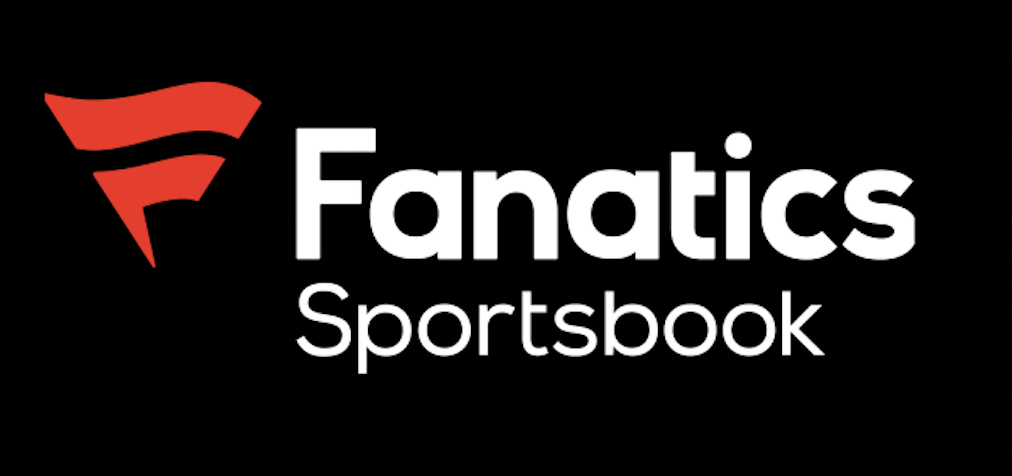Ron Wolf wrote the script.
When he became the general manager of the Green Bay Packers in 1992, he executed a vision that was methodical and long in the making. Previously, Wolf was a scout for the Raiders (1962-74; 1979-89), the vice president of football operations for the Buccaneers (1976-78), and the Jets personnel director (1990-91) before getting his break.
From 1968-91, the Packers had four winning seasons. In nine years with Wolf at the helm, Green Bay went 92-52, highlighted by a Super Bowl victory over the Patriots in 1996.
At the end of his tenure, Wolf wrote a book on how he rebuilt Green Bay’s organization. In “The Packer Way,” the former general manager details nine stepping stones he used to build the Packers into champions.
It’s an interesting roadmap of Wolf’s philosophy. It would also serve as a pretty good reference book for Eliot Wolf in his job as the Patriots’ new executive vice president of player personnel.
Both father and son took over programs coming off four-win seasons. Eliot grew up around the Packers and worked for the team from 2004-17. Here’s a look at Wolf’s nine stepping stones and how his son is already following his blueprint:

Fanatics Sportsbook
10X$100 BONUS BET
BET MATCH BONUS
Must be 21+. GAMBLING PROBLEM? Call 1-800-GAMBLER (CO, KY ,MD, OH, PA, TN, VA, VT, WV); (888) 789-7777 or ccpg.org (CT); 1-800-BETS-OFF (IA); (800) 327-5050 or gamblinghelpline.org (MA), mdgamblinghelp.org (MD), 1800gambler.net (WV)
Stepping Stone 1: Identify What Needs to Be Fixed
“Every rebuilding situation is faced with a list of problems as lengthy as the one I was contemplating. You can react one of two ways. You can stare at all the needs and wonder how you’ll ever get them fixed. Or, more intelligently, you can accept the fact everything won’t be solved overnight.”
When Ron Wolf first took over the Packers, he realized he had a middling roster and didn’t expect to be over .500. For him, it was never about the short-term future. He focused on his “Stepping Stone approach” to improve his roster everywhere until the Packers were at the level he wanted them to be.
That first year, his goal was to add competition. Along with the draft, he loaded up on depth-type players and created competition all over his roster.
His son has already opted for a similar approach. This offseason, the Patriots largely re-signed their players. In free agency, the team spent money by extending Michael Onwenu, Kyle Dugger, Hunter Henry, Kendrick Bourne, Josh Uche, Anfernee Jennings, and Jalen Reagor.
Eliot didn’t break the bank for external free agents. Instead, he added solid veterans Jacoby Brissett, K.J. Osborn, Chukwuma Okorafor, Antonio Gibson, Austin Hooper, Sione Takitaki, Armon Watts, Nick Leverett, Jaylinn Hawkins, Mitchell Wilcox, and Joey Slye.
On offense, the Patriots have several jobs up for grabs with battles at quarterback, receiver, guard and tackle.
Stepping Stone 2: Hire the Best Before Anyone Else Does
“I was confident we could fill the Packer roster with wonderful players and we could have a terrific staff of assistant coaches. But I was convinced that unless we truly found stars to become our quarterback and our coach, the Packers would never threaten for a championship.”
Ron Wolf’s challenge in Green Bay was different as he played a role in hiring the next head coach. The Packers were aggressive in pursuing Mike Holmgren, trading a second-round pick to San Francisco for the rights to their new head coach.
When it came to quarterback, he was hyper-aggressive in landing a prospect who he previously coveted while working for the Jets – Brett Favre. The quarterback was drafted in the second round in 1991 but was Atlanta’s third stringer. A year later, Ron traded a first-round pick (No. 17 overall) to the Falcons for Favre.
For Eliot Wolf, head coach Jerod Mayo was hired before he was. When it came to quarterback, the Patriots de facto general manager also made a big move in the draft.
Despite there being rumors of the Patriots willing to trade their No. 3 pick, the team was locked into drafting a quarterback because of how valuable the position is.
Stepping Stone 3: Develop an Obsession with Winning Today
“I visualized the Stepping Stone approach to building a winning roster this way: we needed to establish a solid foundation of veteran players by keeping the best athletes from the 1991 team who were willing to accept Mike Holmgren’s coaching ways.”
In Ron Wolf’s first offseason, the media thought the Packers would be bad.
His goal was to draft and develop talent while adding veteran players which allowed the younger players to mature. The key was to build better depth and in the long term, develop younger players to be the stars of their franchise. Ron wrote that if he could upgrade the roster “even a little” he thought his new coaching staff would make a difference and the Packers would see better results.
The Patriots’ approach has been similar. Eliot Wolf said he wants his franchise to be a ‘draft and develop’ team. He filled out the roster with veterans giving drafted players time to develop. The hope is that the new offensive staff will also make a big difference.
With Drake Maye, there’s Brissett. For rookie receivers, Ja’Lynn Polk and Javon Baker, there’s Osborn, Bourne, and JuJu Smith-Schuster. Rookie tackle Caedan Wallace has Okorafor.
Stepping Stone 4: Play to Your Strengths
“First, you must acknowledge the negatives. Then you must either eliminate them or if that isn’t possible, identify positives and begin emphasizing them so strongly that they overwhelm the negatives. That’s how you play to your strengths, the essence of the fourth Stepping Stone.”
When Ron Wolf took over, the prevailing belief was that players didn’t want to come to Green Bay. The Wisconsin winters are frigid, and the nightlife wasn’t always booming.
Ron wanted to make Lambeau Stadium a place others feared. That meant embracing the weather and finding tough players who enjoyed playing in the cold. He also discovered that when the Packers started winning, veteran free agents cared less about issues surrounding the geography.
This offseason, Eliot brought in several players who played in cities with the occasional snowstorm – Brissett (Washington), Gibson (Washington), Osborn (Minnesota), Okorafor (Pittsburgh), and Takitaki (Cleveland).
Stepping Stone 5: Use the Four C’s to Measure Performance
“The cornerstones of the fifth Stepping Stone are four principles. Expect Certain Devotion. Expect Certain Dedication. Expect Certain Work Ethic. Expect Certain Results.”
Initially, Ron Wolf noticed that there were internal issues. Employees left as soon as the clock hit 5 p.m. He thought the organization was complacent. Ron became a tough boss and demanded excellence. He had high standards but also made sure to be accountable and dole out praise when things went right.
For example, when the Packers drafted players or brought in a successful player, Ron never took the credit. Instead, he’d tell the media that “the whole operation” was responsible. His goal was to make employees work harder, but make sure everyone received credit to boost morale.
For Eliot Wolf and Mayo, the Patriots had a different issue. Players and employees were operating in a tense environment under Bill Belichick. This offseason, the Patriots removed old signs and logos such as ‘Do Your Job’ to create a more positive environment. New slogans in the building include, ‘We not me,’ ‘Hard work works,’ and ‘Process, Progress, Payoff.’
After Eliot’s first draft, he also took a page out of his father’s book by crediting everyone for the selection of Maye.
“It’s not just Jerod and I,” Eliot said “We’re all working together and we’re all excited about the opportunity that’s been presented to us.”
Stepping Stone 6: Making It Work
“I wanted to rely most heavily on the draft because I felt the long-term stability of the roster depended on the number of young, quality players we obtained, and the draft was the best method to acquire these youngsters.”
When it came to rebuilding, he didn’t just rely on his scouts to draft players.
Wolf made sure to keep Holmgren in the loop. The coach and his staff broke down the tape of college players and free agents every year. Then, Holmgren would talk to Wolf about the players who best fit.
That’s also a strategy that Eliot had this offseason. He not only communicated with Mayo but had a list of players from the Patriots’ three coordinators when it came to free agency and the draft.
This year, it was notable that the Patriots draft room was bigger. Other coaches and the three coordinators were all in the war room when the Patriots were debating players to draft.
Stepping Stone 7: Keeping it Going
“You can’t allow short-term obstacles and shortcut solutions to obscure your vision. You must develop an ability to measure progress even when those outside the organization see none.”
After hiring Holmgren and trading for Favre, Ron Wolf made a laundry list of roster moves to remake the bottom of the Packers roster.
Ron was able to do this because he and Holmgren were on the same page. They knew they wouldn’t have instant success, so they had a long-term strategy to get the Packers back on track. The GM aimed to retain “strong core leaders” to be his “spokes on the wheel.”
That’s why Eliot Wolf prioritized Henry, Onwenu, Bourne, and Dugger. It’s why they signed Brissett to come in and work as a mentor to Maye.
Mayo is also on the same page as his front-office leader as the Patriots take a slower approach to this roster upheaval.
Stepping Stone 8: Handling the Unexpected
“We become so dazzled by the reputation of people from other organizations that we fail to recognize the talents of our own personnel. If you’ve trained your own people properly, you should have able replacements already on the payroll.”
When the Packers started to have success, Wolf didn’t completely alter his strategy. He turned Green Bay into a place where veterans wanted to play which helped them in free agency. However, they were still a draft and develop team. That was key when it came to dealing with injuries.
When All-Pro receiver Sterling Sharpe abruptly retired due to a neck injury, in 1995, Wolf didn’t panic. Robert Books (a third-round pick) stepped up and caught 102 passes for 1,497 yards and 13 touchdowns.
“The fact that he didn’t have to start as a rookie, and could spend time learning from veterans and refining his skills, enabled him to gain the knowledge of the scheme that he needed to excel,” Wolf wrote. “He is a prime example of the Stepping Stone approach at work.”
Eliot Wolf’s goal should be the same. None of his rookies from this year’s class need to start. There are veterans in place for the short term.
Stepping Stone 9: Staying on Top
“To make up for those substantial losses, I’ve had to utilize the same tools that helped us become good in the first place: promote young players already on the roster to starting spots; draft potential starters, and rely on free agency to fill in remaining holes.”
As the Packers won, Ron Wolf faced a similar problem that the Patriots did during their dynasty. When free agency came, their players cashed in and left. Green Bay’s draft success allowed them to not overspend in free agency – although Reggie White was a franchise-altering signing.
Of course, it takes some luck. After Sharpe retired, the Packers tried to sign free agent receiver Andre Rison but were outbid. In the end, Wolf was grateful, saying the move would’ve put a strain on their salary cap when they had a homegrown receiver able to do the job.
It remains to be seen if Eliot Wolf can get the Patriots back on track like his father did, but a similar situation unfolded this offseason when the Patriots were outbid for receiver Calvin Ridley. Instead of paying a veteran over $20 million, he drafted two receivers in Polk and Baker.
Only time will tell if the moves work out. It’s not a surprise that Eliot is on the same path as his dad.
“The Packer way to me is just sort of a draft and develop, extend your core performers from within,” Eliot said in February. “And again, it’s about honesty, respect, and treating people the right way.”






